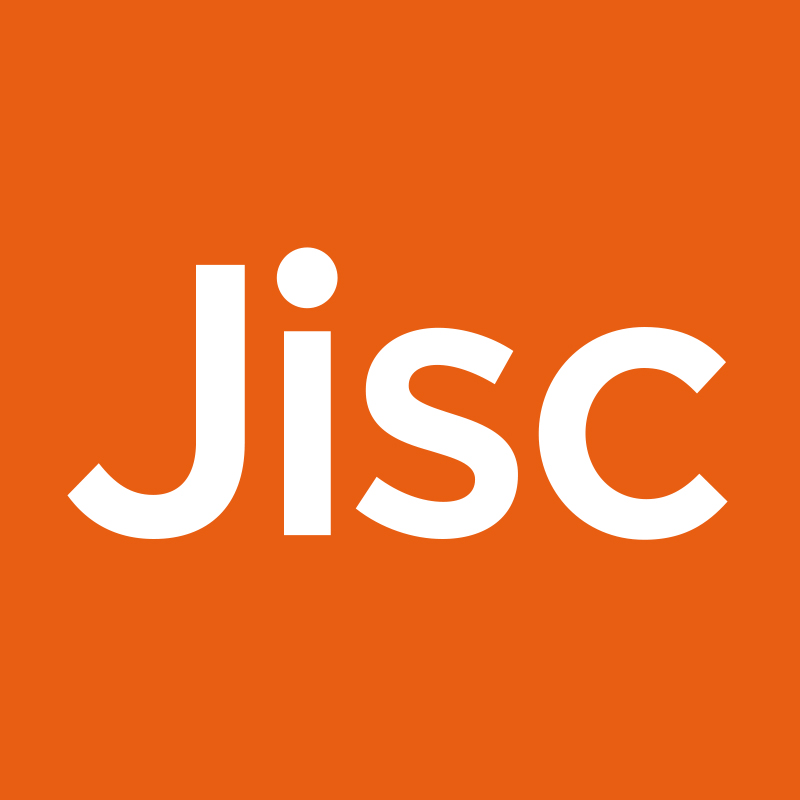As Jisc’s Digital Sustainability Specialist, I spend most of my time researching, writing, presenting and talking exclusively about…well, digital sustainability.
This post will touch on some of that, but I also want to focus on how important collaboration is in strengthening and amplifying any sustainability efforts. I’m delighted to announce the release of a new e-learning module, An Introduction to Digital Sustainability, which simply would not have been possible without the invaluable input from colleagues and Jisc members.

Why an e-learning module?
Helping institutions better understand the environmental impact of their digital activities, devices, and services, can be challenging. Speaking at conferences, writing reports, and hosting workshops all helps to raise awareness, but what about those members we struggle to reach? How do we support those who can’t attend our conferences or workshops, or those who prefer more interactive ways of learning?
During the summer of 2024 I teamed up with my colleague, Scott Hibberson, to address this issue. We needed something that we could share with members to work through in their own time and at their own pace. Usually, as Jisc’s key subject specialist in sustainability I work independently, but working together gave me a sounding board to test my ideas and a fresh perspective in how we could meet our members’ needs. We also collaborated closely with our colleague, Edward Pull in Jisc Training, who had extensive experience of developing e-learning modules.
Bringing colleagues together with different skillsets helped to produce a module that I could not have achieved alone. I want to share the insights I’ve gained by working with others, both colleagues and members.
Defining the scope: setting out the sections
We began our collaboration by asking a vital question: What should this course do for our learners?
We didn’t want to assume too much prior knowledge. Even those with an interest in sustainability are often only just starting to think about the digital side of things. But there’s always a balance to strike. We didn’t want the content to come across as over-simplified either.
Reflecting on the many conversations I’ve had with Jisc members over the last two years, along with insights from the report we published last summer, Digital Sustainability in Tertiary Education: Trends, Challenges and Sector Insights, we compiled a list of topics we felt were crucial. Eventually, we narrowed these down to five core sections:
- A lifecycle analysis of the environmental impact of digital technologies
- The environmental impact of AI
- Digital sustainability best practices
- Digital sustainability leadership
- A curated list of resources
Each section provides a mix of theory and practical guidance. A topic like sustainability requires action too. We didn’t want the module to simply be a source of information that people consume passively. We wanted people to identify clear actions that they could take to drive positive change!
Prototyping
With an agreed structure, we began putting together a rough draft, before adding the content to Articulate Rise – a platform that transforms simple text into something more interactive and visually appealing.
We also used Microsoft Loop to help with the project planning. Loop allowed us to create a shared workspace for jotting down and organising thoughts and tasks, which helped us keep track of the many moving parts.
Throughout this stage, collaboration was key. With a prototype we were able to share the module with colleagues in Jisc’s wider Advice Team for feedback. We tested the activities with them, such as scenario-based learning approaches, quizzes and interactive images to ensure they added value. Involving different people here is so useful in order to overcome any barriers to learning too.
This step helped us to refine the module further by setting the theory in a range of real-world contexts. Making a topic like digital sustainability relatable is key to getting buy-in.
Prototyping is an invaluable part of the process as it allows you to rectify many issues before the module reaches a wider audience.
Involving our members
Unless you involve contacts in colleges and universities there’s always the risk of operating in an echo chamber and missing out on important perspectives.
After refining initial feedback, the next step was to showcase the module with a small but representative group of Jisc members. Luckily, we coordinate a range of communities of practice at Jisc and enlisted willing volunteers from the FE & Skills Digital Sustainability Community and our regional Teaching and Learning forums.
We would like to extend our thanks to the following testers who came on board:
- Chris Ash, E-Learning Developer, Suffolk New College
- Karen Workman, Vice Principal/COO, Coleg y Cymoedd
- Kathleen Calder, Senior Learning Designer, The Open University
- Helen Cresswell, Green Changemaker and Early Years Education Lecturer, Halesowen College
- Chelsie Naylor, Sustainability Lead, Bradford College
They provided fantastic advice, including a recommendation to add a dedicated section on data management – something that’s often overlooked yet deeply intertwined with digital sustainability.
They also provided ideas on how the module could be used:
“I can easily see how we could ask our college management team to complete this and then use one of our meetings to reflect and review together.”
Karen Workman
These are exactly the types of use cases we like to follow up with at Jisc as they provide invaluable case studies for others too.
Final reflections
Key lessons I’ve learned include:
- Collaboration beats isolation – Working with Scott, Edward, and our broader team allowed us to create a more comprehensive and engaging module than I could have done alone.
- Early and honest feedback is crucial – You don’t know what you don’t know until someone else points it out. Being open to critique made the final product far stronger.
- Iteration is part of the fun – Ideas evolve along the way, and that’s a good thing. Our module changed significantly from the first draft to the final version, and each tweak made it better.
- Real-world testers are invaluable – The feedback from members demonstrated the importance of trialling on a smaller scale before a full public release.
It’s not often that I blog about the ‘behind the scenes’ process, but I found it refreshing. And if sharing these insights helps others see the value of collaboration – or perhaps take on a similar project themselves – then it’s been well worth it.
Leading on from the E-learning module, our next steps will focus on a project aiming to help embed digital sustainability into Teaching, Learning, and Assessment through a series of interviews with our members. If you work in the FE, HE, or Skills sectors and would like to get involved with these interviews, please email your interest to my colleague and project lead Scott Hibberson at scott.hibberson@jisc.ac.uk.


One reply on “Collaborating on Jisc’s introduction to digital sustainability e-learning module ”
[…] 📖 Read about the collaborative process of creating this module in this blog. […]